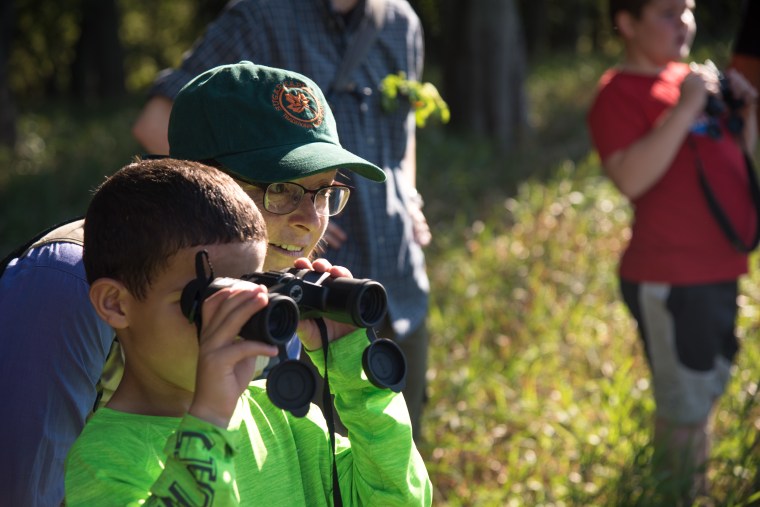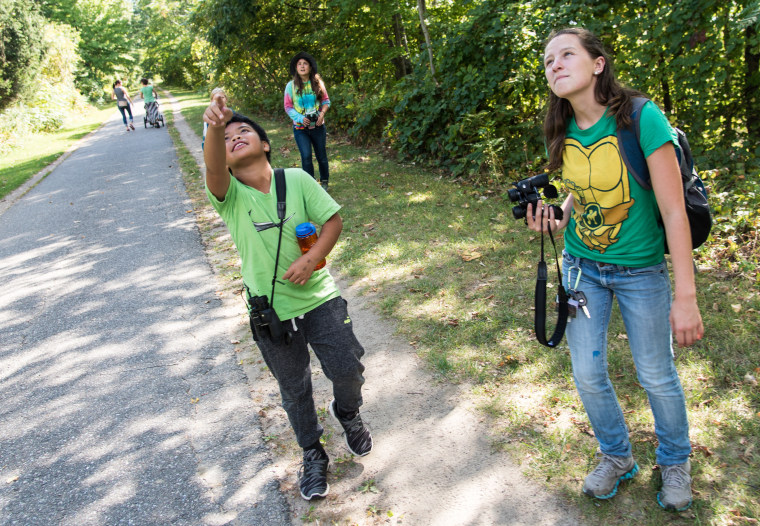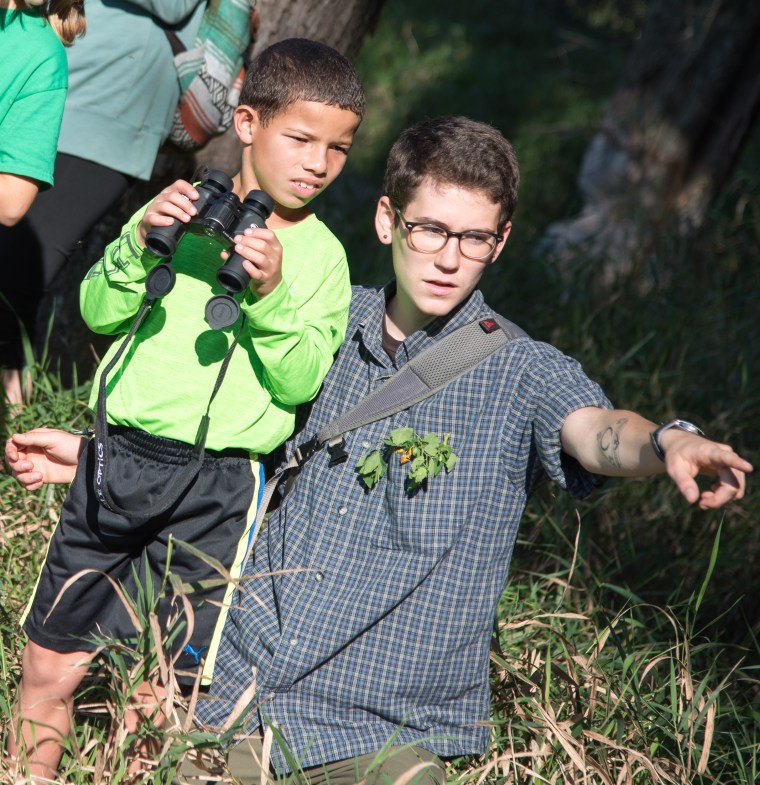Once a week, University of Vermont student Nathaniel Sharp trudges through Burlington’s wildlife-rich Derway Island with the nature club from the J.J. Flynn Elementary School, hoping to spot a turkey vulture or a pileated woodpecker.
Not only do he and other UVM students get academic credit for this environmental studies course, they also get to connect with 9- and 10-year-old “bird buddies,” many of whom are children from immigrant families or underprivileged backgrounds.
“This outdoor playtime is much more than just recess,” said Sharp, 20, of Wallingford, Pennsylvania, of the activities that the kids do, which range from painting their faces with mud and building forts in the woods to nudging woolly caterpillars out of harm's way.
“It is the development of an environmental ethic at a young age in children that may have very few other opportunities to get outside,” Sharp told NBC News.
UVM is one of a growing number of colleges that have grant competitions to develop courses like this birding one, using “high impact practices” to increase student engagement and retention.

UVM professor Trish O’Kane calls her course “Birding to Change the World” — and she really believes the unique class can do just that.
“These college students were born just a few years before Sept. 11 and they were 5, 6, 7 when Hurricane Katrina happened,” she told NBC News. “Some of my students come into my office and cry when they talk about these issues. They are scared for the future of the planet.”
Her students and their bird buddies use top-of-the-line binoculars to identify 45 bird species by sight, call, habitat and behavior. Two days a week, they have in-class lectures and assignments to prepare to work with the school children.
The class also teaches citizenship, O’Kane said. “Even a small thing like walking for a few hours with a child and sharing your passion and knowledge with them … I see some kids holding hands with the college student. And I see in their papers how moved they are that a child is listening to them.”
O’Kane’s background is as unusual as her birding course.
At 53, she has been a human rights investigative journalist in Central America, taught in prisons in the American South and, after Hurricane Katrina, got a Ph.D. in environmental studies.
“I did a 180 after I witnessed my neighborhood totally destroyed. Before that, I had only paid attention to people, but never thought about environmental issues,” she said.
She doesn't want the next generation to wait that long.
“This may be the first time they have stepped outside and connected with a bird,” O’Kane said. “They learn a cardinal can live to be 14 years old and this is his yard, not yours.”

The birding class is one of seven courses that are part of UVM’s Engaged Practices Innovation grant program, which started two years ago.
“UVM is a land grant institution, so part of its mission is community outreach — to make a difference in the lives of students who come from an ethnically diverse part of town,” said Brian V. Reed, associate provost for teaching and learning.
UVM will not only assess the impact of the class on its own students, but will track the progress of these local children through middle school and high school to see how they fare academically.
“We want to help students develop aspirations for college,” he told NBC News.
So far, UVM students give the course rave reviews.
“It's so important to give kids the opportunity to see that nature is right outside their school and their homes.”
B Freas, 21, of Baltimore, is taking the course for a second time, working with a bird buddy who speaks primarily Spanish.

“I found myself able to welcome him into the club in a way that was hopefully gentle and helped him feel safe in a new and potentially overwhelming environment,” said Freas, who also speaks Spanish. “One of the things I love most about working with these fourth and fifth graders is that they remind me to play.”
“One minute we're spotting a blue jay, the next we're learning a new word in Spanish, and the second after that, we're chatting about video games,” Freas added. “It's so important to give kids the opportunity to see that nature is right outside their school and their homes.”
“This is a really unique partnership with the university that goes far beyond anything the city can offer in an after-school program.”
Flynn Elementary students are “wildly enthusiastic” about the experience, said Principal Graham Clarke. “This is a really unique partnership with the university that goes far beyond anything the city can offer in an after-school program.”
“There is strong connection and intimacy walking together and having a shared multigenerational experience,” Clarke told NBC News.
Both the kids and the college students benefit, he added.
“One of the kids was given a birding book from his mentor last week. It meant the world to him,” Clarke said. “And our students see the utter excitement of a UVM student who has never seen a bald eagle before. It equalizes the learning.”